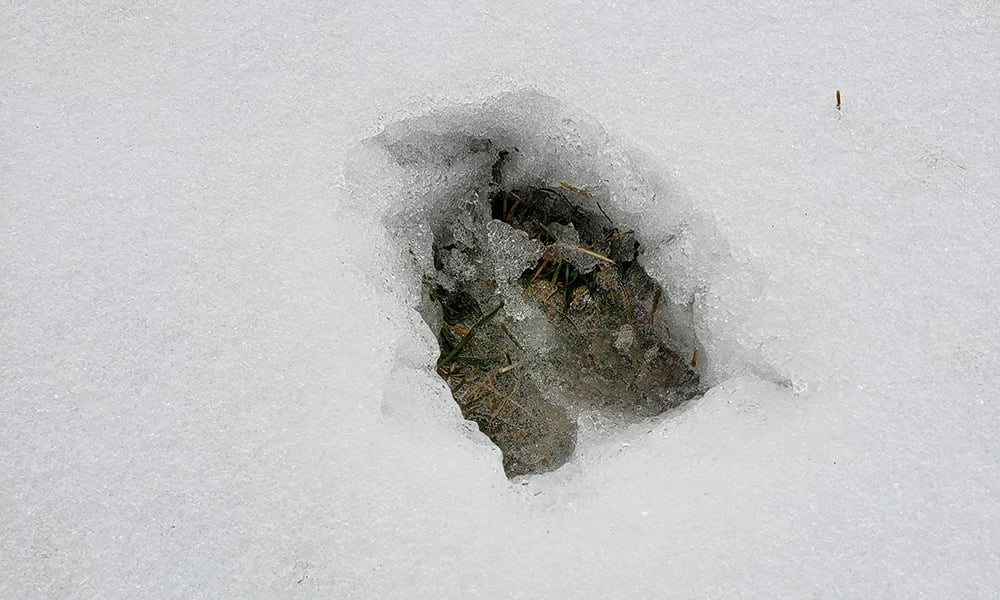
“Never forget the trail, look ever for the track in the snow; it is the priceless, unimpeachable record of the creature's life and thought, in the oldest writing known on the earth.”
~ Ernest Thompson Seton, author, artist, and nature enthusiast
Seton is referring to the intimate tales written by nature’s very own wildlife. Our connection with nature is greatly enhanced by our desire and ability to observe the natural world. Wildlife tracking and observation offer us a glimpse into the past: Who was here, what were they doing and where were they going?
What’s the Story? Learning How to Read Again
As wildlife interpreters, people often ask us to help identify tracks they may have found in their backyard or out in our preserves. But the truth is, identifying a single animal print is only a small part of a much bigger puzzle.

Bobcats tend to have five toes on their front paws and four on their rear paws.
The gait of an animal — or stride pattern — will help you to not only identify the species but also predict what they were doing. The gait can tell you if it is an arboreal species, if they are bounding or galloping, or sometimes, the actual species.
The “Y” shaped pattern of the eastern cottontail is easy to deduce. It tells us that the back feet landed in front of the forelimbs, suggesting that the animal was moving at a decent speed. The next question would be, why was it galloping? Perhaps there are coyote tracks nearby or a great horned owl in a neighboring tree. Don’t only look at your feet, look up, down, and all around.

A pair of opossum tracks in the snow.
Reading Beyond the Prints
When looking for signs of wildlife, read beyond the footprint. Animals leave more clues to their presence besides footprints and gaits. Scat, fur, feathers, bones, antler sheds, and even the tiniest chew marks on the shell of an acorn can provide clues about who is in the area and what they are doing.

Mallard duck tracks.
Tips for Identifying Animal Tracks
● Take a camera, magnifying glass, ruler, notebook, and an animal tracking field guide. And don’t forget to measure the prints and the length of the gate. This will help with future identification.
● If you take a photo, we suggest you take a photo directly above the print, and then another one with a broader perspective that will capture the gait. The measuring tape or ruler will help provide a size reference. If you do not have either item, coins, dollar bills or universally sized objects can help too.
● Start yourself off easy. Go to an area where there is water or mud. Prints are much easier to identify in soft substrates. Of course, snow is a great option when it is available too.
● The best way to see the tracks is to place your cheek close to the ground, look toward the track and past it. This will help you to see depressions in the soil and possibly find another print.
● Take this handy Whose Track is That? (PDF) guide with you to help identify animal tracks.

Rabbit (top) and squirrel tracks.
Join a Willowbrook wildlife interpreter to improve your observational and deductive skills as you look for tracks and other evidence of wildlife at Wildlife Tracking and Observation on Saturday, Feb. 19 from 10 a.m. to noon at Willowbrook Wildlife Center, 525 E. Park Blvd., in Glen Ellyn. The program is for ages 12 and up; under 18 with an adult. $5 per person. Participants must wear a mask that covers their nose and mouth when inside forest preserve buildings. Consider wearing a mask in crowded outdoor settings and for activities that involve close contact with others who are not fully vaccinated. Register online or at 630-942-6200.

Opossum tracks with tail drag.
Nate Hambel
